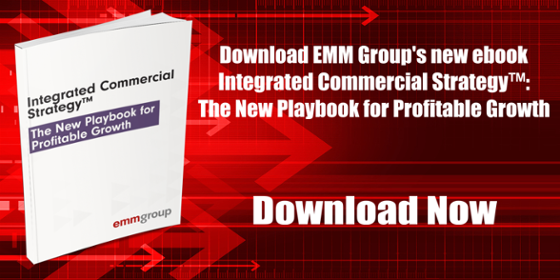 If you’re doing business for profit, somewhere along the way you must be attempting to provide some form of value to your customers. If you’ve achieved any amount of success, your customers must be experiencing that value.
If you’re doing business for profit, somewhere along the way you must be attempting to provide some form of value to your customers. If you’ve achieved any amount of success, your customers must be experiencing that value.
However, the question to consider is: Are you offering the right kind of value? And is it sustainable?
The relationship between value and price
You see, “value” is an overused term in business - especially the marketing and sales disciplines - and it’s often misunderstood.
The assumption is that value and price are essentially synonymous. If you can offer a quality product at the best (read: lowest) price, you’re offering customers the best value and they will reward that with more sales. And, in some contexts, that assumption works. Wal-Mart has built the largest retail empire in history on this very concept.
There is no doubt that price and value are strongly linked. In lieu of other evidence, the average consumer or B2B purchasing agent will revert to price comparison when considering two or more similar products or services, and they’ll go with the least expensive option.
But the “other evidence to consider” is a huge factor that many businesses tend to overlook or downplay in favor of catering to the price war mentality. The result is steep discounts, additional services and upgrades piled on repeatedly, and shrinking of profit margins.
That strategy is unsustainable.
While price and value are inextricably linked, the “other evidence to consider” needs to be a main focus of companies wishing to pull themselves out of the self-commoditization cycle described above. Focusing on identifying and communicating that evidence allows these companies to create differential or quantified value.
What is the difference between value and differential value?
Whereas “value” represents what the customer gains by purchasing a product or service, “differential value” describes how and why the customer can only gain that value by buying YOUR product or service.
As an example, you can state that your widget costs less than their widget, or that it requires less maintenance. That expresses value and encourages a direct price comparison. On the other hand, stating that your widget “provides an instant 19% decrease in maintenance costs over the life of the part compared to Brand X’s widget” expresses differential value.
Differential value is the economic expression of what makes your value proposition unique compared to your competition. It clearly shows how your customer will save or earn more money as a result of their purchase of your product or service rather than another.
Logically, differential value is determined by developing a Quantified Value Proposition (QVP).
Differential value and the QVP
We’ve been discussing the Quantified Value Proposition a lot recently as we consider it a vital part of any sustainable commercial strategy. Establishing differential value as a strategic tool for marketing and sales provides a competitive advantage that few other activities can match.
To establish differential value, three main components must be present:
- You must have a deep understanding of your customer’s frame of reference - what they consider to be their scope of alternatives.
- You must be able to clearly explain how and why your product or service is superior.
- You must be able to logically connect that differential value to price.
Developing a QVP can cause all three of these components fall into place. It’s a backend investment that pays for itself a thousand fold if done properly.
We strongly encourage you to explore the following free resources to learn more about the Quantified Value Proposition and how it is unavoidably linked to a successful Integrated Commercial Strategy (ICS).


